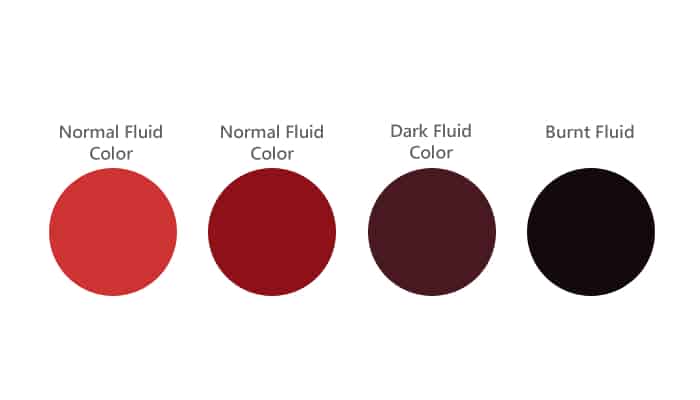Understanding Transmission Fluid for Your Chrysler Sebring
When it comes to keeping your 2002 Chrysler Sebring running smoothly, one of the most critical components to consider is the transmission fluid. This fluid plays a vital role in the overall performance of your vehicle’s transmission system. Let’s break down what you need to know about the type of transmission fluid recommended for your Sebring.
Manufacturer’s Recommendations
| Popular posts |
|---|
| What to do to prolong the life of your manual gearbox |
| Automatic transmission: what it is, how it works |
Chrysler has specific recommendations for the type of transmission fluid that should be used in the 2002 Sebring. According to the manufacturer, the recommended transmission fluid is:
- ATF+4 (Automatic Transmission Fluid)
This fluid is specially formulated to meet the requirements of Chrysler’s automatic transmissions, ensuring optimal performance and longevity. Using the correct type of fluid is crucial, as it affects everything from shifting performance to the overall health of the transmission.
Specifications of ATF+4
ATF+4 is not just any transmission fluid; it has specific properties that make it suitable for Chrysler vehicles. Here are some key specifications:
- Viscosity: The fluid has a viscosity rating that allows for smooth operation in various temperature ranges.
- Friction Modifiers: ATF+4 contains friction modifiers that enhance the performance of the transmission, providing better engagement and smoother shifting.
- Oxidation Stability: This fluid is formulated to resist breakdown over time, which helps in maintaining the transmission’s performance.
- Low Temperature Fluidity: It performs well in colder temperatures, ensuring that your transmission operates effectively even in winter conditions.
Why Use the Recommended Fluid?
Using ATF+4 is not just a suggestion; it’s a necessity for maintaining your vehicle’s transmission health. Here’s why:
- Performance: The right fluid ensures that your transmission shifts smoothly and efficiently, which can improve your driving experience.
- Longevity: Using the recommended fluid can extend the life of your transmission, saving you from costly repairs down the line.
- Warranty Compliance: If your vehicle is still under warranty, using the specified fluid is often a requirement to keep your warranty valid.
Where to Find ATF+4
You can find ATF+4 at various auto parts stores, dealerships, and online retailers. When purchasing, ensure that the fluid is labeled as ATF+4 to avoid any mix-ups with other types of transmission fluids that may not be suitable for your Sebring.
In summary, understanding the type of transmission fluid your 2002 Chrysler Sebring requires is essential for maintaining its performance and longevity. Stick to the manufacturer’s recommendations, and you’ll keep your transmission running like a champ.
Recommended Oil Brands for Your Chrysler Sebring
When it comes to choosing the right transmission fluid for your 2002 Chrysler Sebring, not all fluids are created equal. While the manufacturer recommends ATF+4, there are several brands that have garnered positive feedback from owners and mechanics alike. Let’s dive into some of the most recommended oil brands based on real-world experiences shared in forums and owner feedback.
Top Recommended Brands
Based on discussions among Chrysler Sebring owners, here are some of the most trusted brands for ATF+4 transmission fluid:
- Chrysler Mopar ATF+4: This is the factory-recommended fluid, and many owners swear by it. Using Mopar ensures that you are getting the exact formulation designed for your vehicle.
- Valvoline MaxLife ATF: Valvoline is a well-known name in the automotive industry, and their MaxLife ATF is often praised for its performance. Many users report smoother shifts and improved transmission response after switching to this fluid.
- Castrol Transmax ATF: Castrol’s Transmax line is another popular choice among Sebring owners. Users appreciate its ability to maintain performance over time, especially in varying temperature conditions.
- Royal Purple Max ATF: Known for its high-performance lubricants, Royal Purple’s Max ATF has received positive feedback for its ability to reduce friction and improve overall transmission efficiency.
- Mobil 1 Synthetic ATF: Mobil 1 is synonymous with quality, and their synthetic ATF is no exception. Many owners report that it helps in extending transmission life and enhancing shifting performance.
Owner Experiences and Feedback
Owner feedback is invaluable when it comes to selecting the right transmission fluid. Here are some insights gathered from various automotive forums and discussions:
- Chrysler Mopar ATF+4: Many owners emphasize that using the factory-recommended Mopar fluid has led to fewer transmission issues. One user noted that after switching to Mopar, they experienced less slipping and smoother shifts, particularly during acceleration.
- Valvoline MaxLife ATF: Several users have shared that after switching to Valvoline, they noticed a significant improvement in shifting performance. One owner mentioned that their Sebring felt “like new” after the fluid change, highlighting the brand’s effectiveness in rejuvenating older transmissions.
- Castrol Transmax ATF: Owners have reported that Castrol’s fluid performs well in both hot and cold conditions. One forum member stated that their Sebring handled winter driving much better after using Castrol, with no noticeable lag during cold starts.
- Royal Purple Max ATF: While a bit pricier, many users believe that Royal Purple is worth the investment. Feedback indicates that it not only improves shifting but also helps in reducing overall wear and tear on the transmission.
- Mobil 1 Synthetic ATF: Users have praised Mobil 1 for its long-lasting performance. One owner shared that they had driven over 100,000 miles without any transmission issues after switching to Mobil 1, attributing the longevity to the quality of the fluid.
What to Consider When Choosing a Brand
When selecting a transmission fluid brand for your Chrysler Sebring, consider the following factors:
- Price: While some brands may be more expensive, many owners find that investing in quality fluid pays off in the long run.
- Availability: Make sure the brand you choose is readily available at local auto parts stores or online. Convenience can be a significant factor in maintenance.
- User Reviews: Always check user reviews and feedback from other Sebring owners. Real-world experiences can provide insights that specifications alone cannot.
- Compatibility: Ensure that the fluid you choose explicitly states compatibility with ATF+4 to avoid any potential issues.
In the world of automotive maintenance, choosing the right transmission fluid can make a significant difference in your vehicle’s performance. By considering the experiences of fellow Chrysler Sebring owners and sticking to reputable brands, you can help ensure that your transmission remains in top shape for years to come.
Change Interval for Transmission Fluid
Understanding when to change your transmission fluid is essential for maintaining the health of your 2002 Chrysler Sebring. While the manufacturer may provide a general guideline, the actual change interval can vary based on driving conditions, habits, and the type of fluid used.
Recommended Change Interval
For most Chrysler vehicles, including the Sebring, the recommended change interval for automatic transmission fluid is typically around:
- 30,000 to 60,000 miles (48,000 to 96,000 km) under normal driving conditions.
- 15,000 to 30,000 miles (24,000 to 48,000 km) if the vehicle is frequently driven in severe conditions, such as heavy towing, stop-and-go traffic, or extreme temperatures.
These intervals are not just arbitrary numbers; they are based on extensive testing and data collected by manufacturers and automotive experts. Regular changes help prevent the buildup of contaminants and ensure that the fluid maintains its protective properties.
Partial Transmission Oil Changes
In many cases, performing a full transmission fluid change can be a complex process that involves removing the transmission from the vehicle. This is not only time-consuming but can also be costly. As a result, many owners opt for partial transmission oil changes, which can be a practical alternative.
What is a Partial Transmission Oil Change?
A partial transmission oil change involves draining a portion of the old fluid and replacing it with new fluid. This method can help refresh the fluid without the need for a complete removal of the transmission.
Benefits of Partial Changes
1. Cost-Effective: Partial changes are generally less expensive than full fluid changes, making them more accessible for many vehicle owners.
2. Easier Process: The procedure is simpler and quicker, often requiring just a drain and refill rather than extensive labor.
3. Improved Fluid Quality: Even a partial change can help reduce the concentration of contaminants in the transmission fluid, improving overall performance.
Considerations for Partial Changes
While partial changes can be beneficial, they should not be seen as a complete substitute for full fluid changes. Here are some considerations:
- **Contaminants: A partial change may not remove all the old fluid, which can still contain harmful particles and debris.
- **Fluid Mixing: If different types or brands of fluid are mixed, it can lead to compatibility issues, potentially affecting performance.
- **Frequency: Partial changes should be performed more frequently than full changes to maintain fluid quality.
Statistical Data and Authoritative Sources
According to the American Transmission Rebuilders Association (ATRA), regular maintenance, including fluid changes, is crucial for the longevity of automatic transmissions. They recommend following the manufacturer’s guidelines but also emphasize that driving conditions can significantly affect the lifespan of transmission fluid.
Research from various automotive studies indicates that neglecting fluid changes can lead to increased wear and tear on transmission components, ultimately resulting in costly repairs. A study published in the Journal of Automotive Engineering highlights that vehicles with regular fluid changes experience fewer transmission failures compared to those that do not adhere to maintenance schedules.
In summary, understanding the change interval for your transmission fluid and considering partial changes can help keep your 2002 Chrysler Sebring running smoothly. Regular maintenance is key to preventing issues and ensuring the longevity of your vehicle’s transmission system.
What Color Should Transmission Fluid Be?


